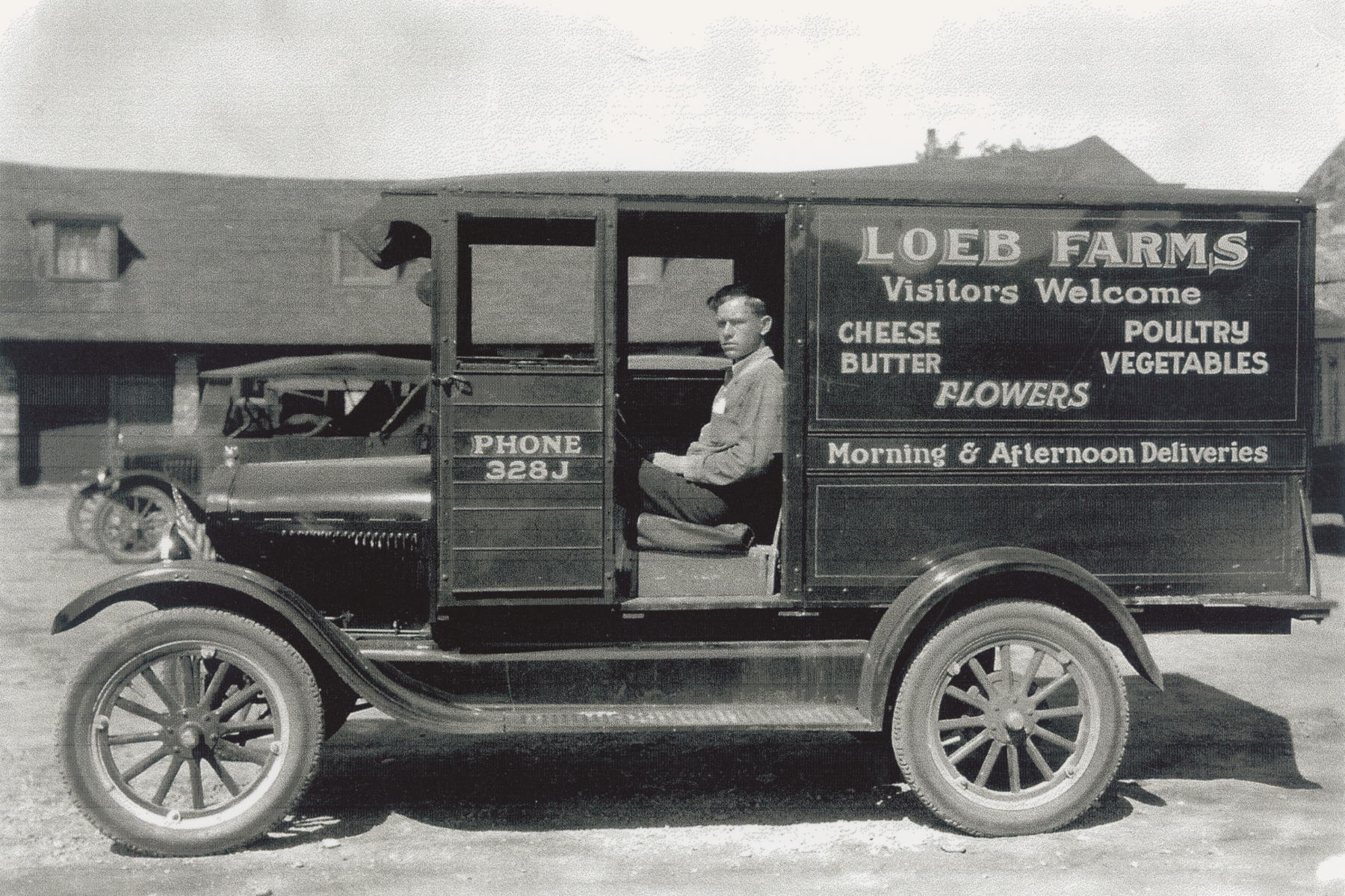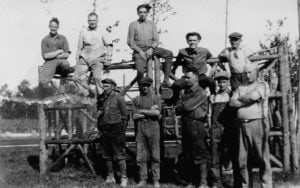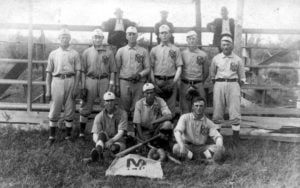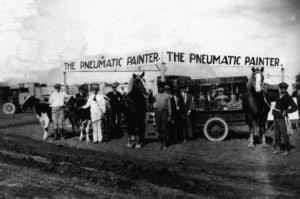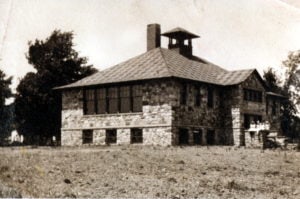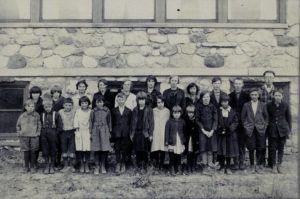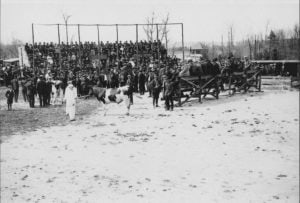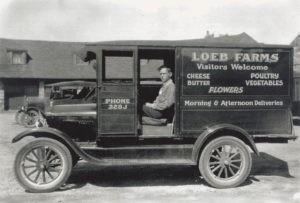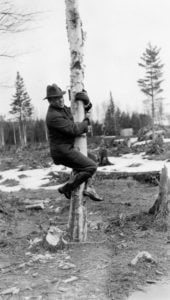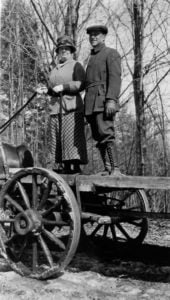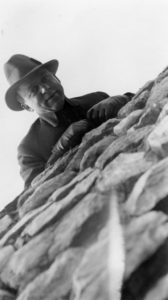As we have already learned, Albert Loeb’s vision of a working dairy farm flourished after two years of building. When the farm opened to the public, it immediately became a popular gathering spot. The soaring towers and majestic stone walls excited visitors, who never passed up an opportunity on Sunday afternoons to stroll the grounds and marvel over the latest farm equipment, view prize-winning livestock, or cheer on The Sodbusters, a semi-professional baseball team owned by Albert Loeb.
An avid baseball fan, Albert formed The Sodbusters baseball team for the farm in 1919. The team took to the field regularly, as it was located on the north side of the barn complex. A dugout and stone grandstand were built across from the Farms’ front entrance. Visitors could sit in the bleachers and watch the baseball game while enjoying ice cream. In July of 1919, the team went up against the Charlevoix Amateur League, with proceeds donated to the local hospital. The Sodbusters were part of the Northern Michigan Amateur Baseball League. They played for a number of years and faced area teams from Boyne City, Central Lake, Harbor Springs, Petoskey, Pellston, Cross Village and St. Ignace. Albert Loeb even sponsored an exhibition game between the Chicago White Sox and The Sodbusters! The team disbanded in 1923 but remnants of the old stone bleachers and dugouts that surrounded the baseball diamond are still visible today.
Albert Loeb was very involved with the community as well. Loeb Farms featured their prize-winning livestock annually at the Charlevoix County Fair. They even constructed a grand exhibition building on the fairgrounds to use for the fair. Albert Loeb was committed to bringing better stock to Northern Michigan so he encouraged breeders and often played host to meetings of dairymen and breeders, with men of national fame brought to speak. In 1919, he also funded and constructed a local school, Loeb School, to benefit the community and by 1923 it had gained accreditation as a standard school.
During the late 1920s, nearly one million American farms went bankrupt but many thought Loeb Farms would be immune from the agricultural depression sweeping the nation. The farm appeared to have an idyllic existence, and while the rest of the country might suffer from the hardship of an agricultural depression, Charlevoix residents had faith that Loeb Farms would survive.
In October 1924, things quickly took a turn for the worse with the death of Albert Loeb. It was known that Mr. Loeb suffered from a bad heart but his passing was the beginning of the end for Loeb Farms. The second eldest son, Ernest Loeb, took over the estate. Ernest had a reputation as an honest and generous employer, but business concerns in Illinois also demanded his attention so his heart and energies became increasingly split. By 1927, facing the aftermath of the agricultural depression, Ernest decided to close the Farm and sell most of the property as well as all the livestock and farm equipment. Over the next thirty years, the buildings and remaining property were used solely for storage, and eventually fell into disrepair.
Every castle needs a knight in shining armor. In the 1960s, the great empty stone walls attracted the attention of a dreamer named John VanHaver. Find out next month how this talented artist transformed Loeb Farms into Castle VanHaver!
